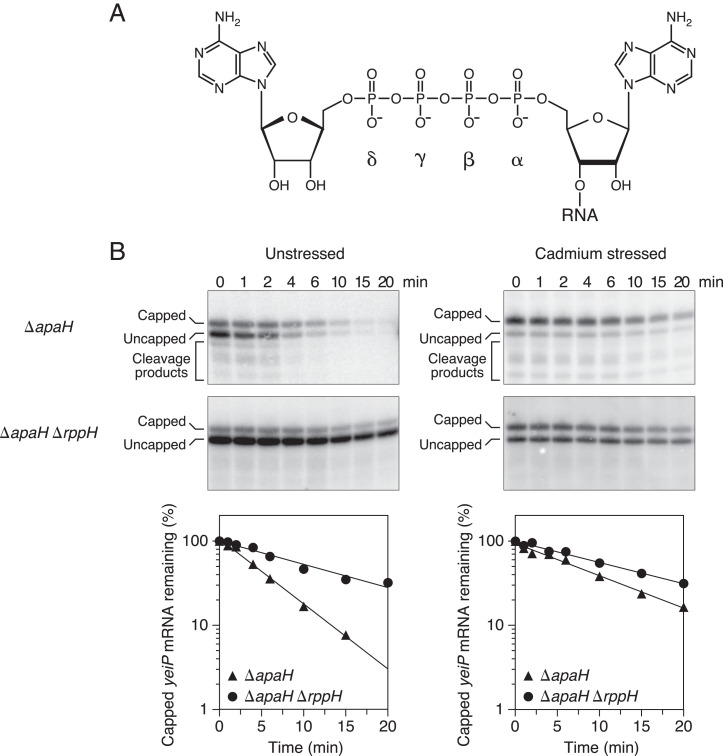Fig. 1.
Effect of disulfide stress on RppH activity in E. coli. (A) Structure of the 5′ end of Ap4-capped yeiP mRNA. Only the cap and the first transcribed nucleotide of this A-initiated RNA are shown. The α-, β-, γ-, and δ-phosphates of the cap are labeled. (B) Rate of loss of capped yeiP mRNA after arresting transcription in E. coli mutants lacking ApaH and/or RppH. (Top) Northern blots. Cultures of the indicated strains (ΔapaH or ΔapaH ΔrppH) growing in MOPS-glucose medium either were treated with cadmium chloride (cadmium stressed; Right) or were not (unstressed; Left), and equal amounts of total RNA extracted at time intervals after inhibiting transcription were cleaved site-specifically with a deoxyribozyme targeting yeiP (SI Appendix, Table S3) and analyzed by boronate gel electrophoresis and blotting with a radiolabeled yeiP probe. (Bottom) Graphs. The amount of capped yeiP mRNA that remained was plotted semilogarithmically as a function of time, and best-fit lines were calculated by linear regression. First-order rate constants for the disappearance of capped yeiP mRNA were determined from the slopes of these lines. Representative experiments are shown.

